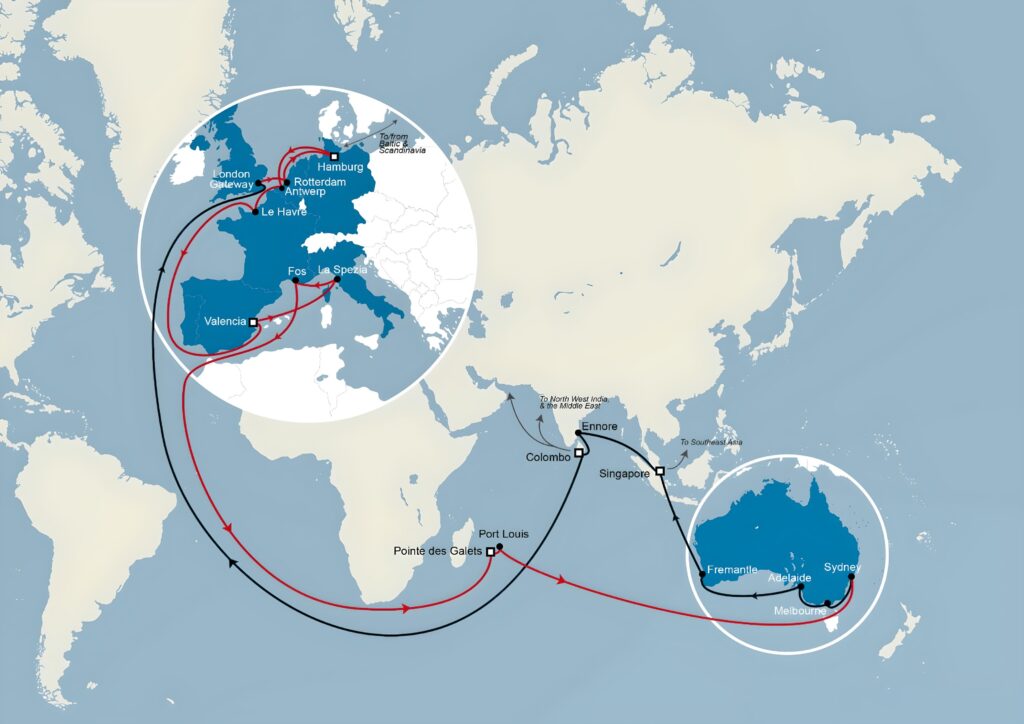“Expect another surge in freight costs and even more delays with getting containers to port.” That is according to a group of freight companies who spoke to Wood Central (anonymously) about the difficulties in trading bulk goods across an increasingly clogged global shipping network.
“Over the past three months, our TEU (or twenty-foot equivalent unit, a general unit for cargo capacity) has jumped another 60%,” the group said, “so prices to freight are now extremely high, and that’s before the peak season pricing is applied on freighted items (September to Christmas).”
As one of the most traded products on earth, more than US $188 billion worth of timber products are traded from country to country and port to port, with a large portion of this ‘bulk trade’ occurring on open waters.
And as a result, the global supply chain for timber products—now used to build some of the largest buildings in the world—is highly vulnerable to geopolitical turmoil along the shipping network.

In June, Wood Central revealed that the Red Sea Crisis has seen more than US $200 billion worth of bulk trade rerouted around the Cape of Good Hope, causing chaos for global timber’s “big six”—China, Canada, Russia, Sweden, Germany, and the United States, which traded more than 70% of timber through the Suez Canal.
While the Red Sea shows little sign of abating (at least until the US presidential elections in November), the global shipping network has a far more permanent problem—which it is slowly working through.
“Simply put, (until now) we haven’t had enough commercial vessels on the water to meet current demand,” the group warned Wood Central. “The situation has seen the world’s largest shipping lines charter smaller boats to plug the gaps in the supply chain,” they said, adding to traffic at sea and in ports and exacerbating delays in getting freight from point A to B.

Global shipping responds to the demand for more vessels
Wood Central understands that concerns with the supply of commercial vessels go back several years, with the BBC warning (in 2021) that global shipping was “creaking” under the strain of global demand.
“It’s always been absolutely vital; it’s just never been noticed,” said Rose George, the author of Ninety Pecent of Everything, a book that looks at the economics of global shipping. “It’s taken the current (COVID-19) crisis to highlight how crucial shipping is to the global economy.”
Many industry shipping giants, including Maersk, Hapag-Lloyd, and Mediterranean Shipping Company (now the world’s largest line by volume), have already been hit hard by the container shortage, grappling with new ways to meet demand as the industry awaited a tidal wave of new container ships due to hit the water over coming months and years.
It saw Hapag-Lloyd consider reusing older containers to cope with the increasing demand, with Nils Haupt, Hapag-Lloyd’s then director of corporate communications, telling Ship-Technology in 2021:
“We are desperately looking for more capacity…we are asking our customers to return empty containers earlier and looking at containers currently in repair because they have reached a certain age.”
The container industry has never been more profitable, and right on cue, global shipping has ordered more new container ships than ever before: “A huge number of new large container ships are going to hit the water,” according to Alphaliner shipping analyst Stefan Verberckmoes (who in 2022 spoke on the number of containers hitting the market).
“Most of the tonnage on order will be delivered over the next two years: 2.34 million TEUs in 2023 and 2.83 million TEUs in 2024, compared to around 1.1 million TEUs in 2021 and 2022.”
- Visit Wood Central’s special feature to learn more about the impact of the Red Sea crisis on the global supply chains for timber products. Click here to also learn about the rapidly drying up Panama Canal and its impact on the worldwide squeeze of timber through the Americas.






